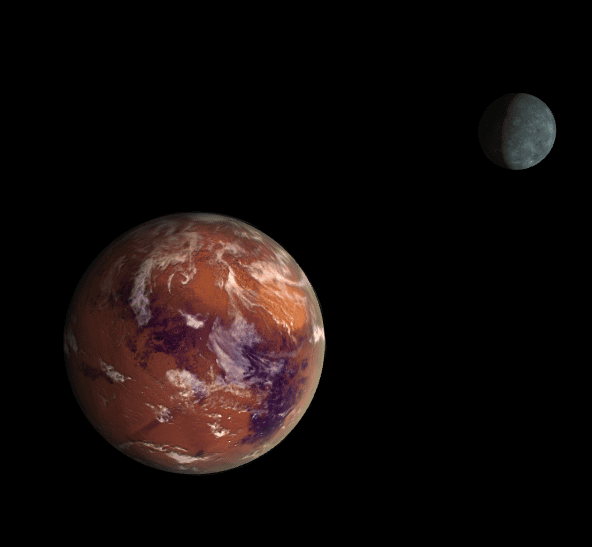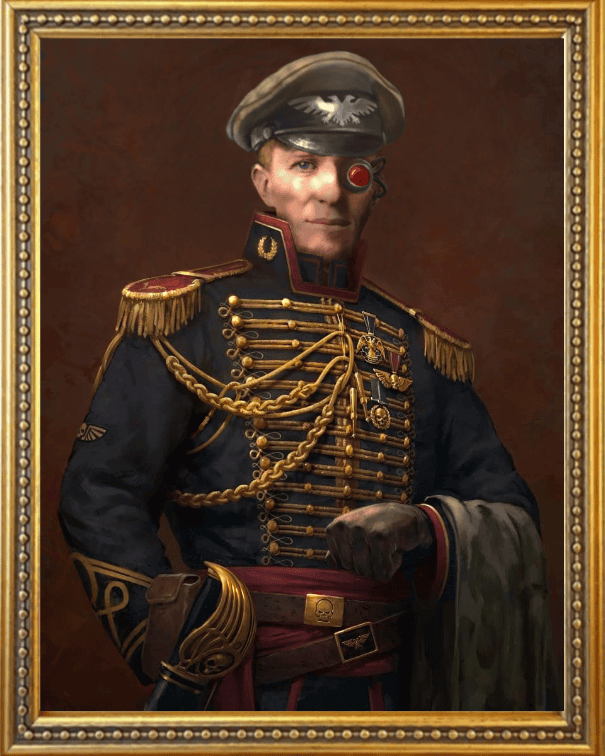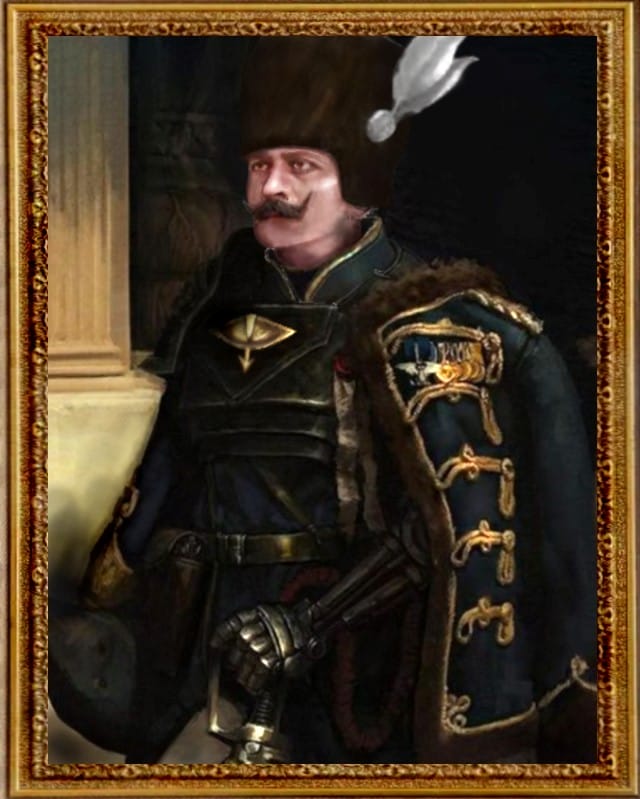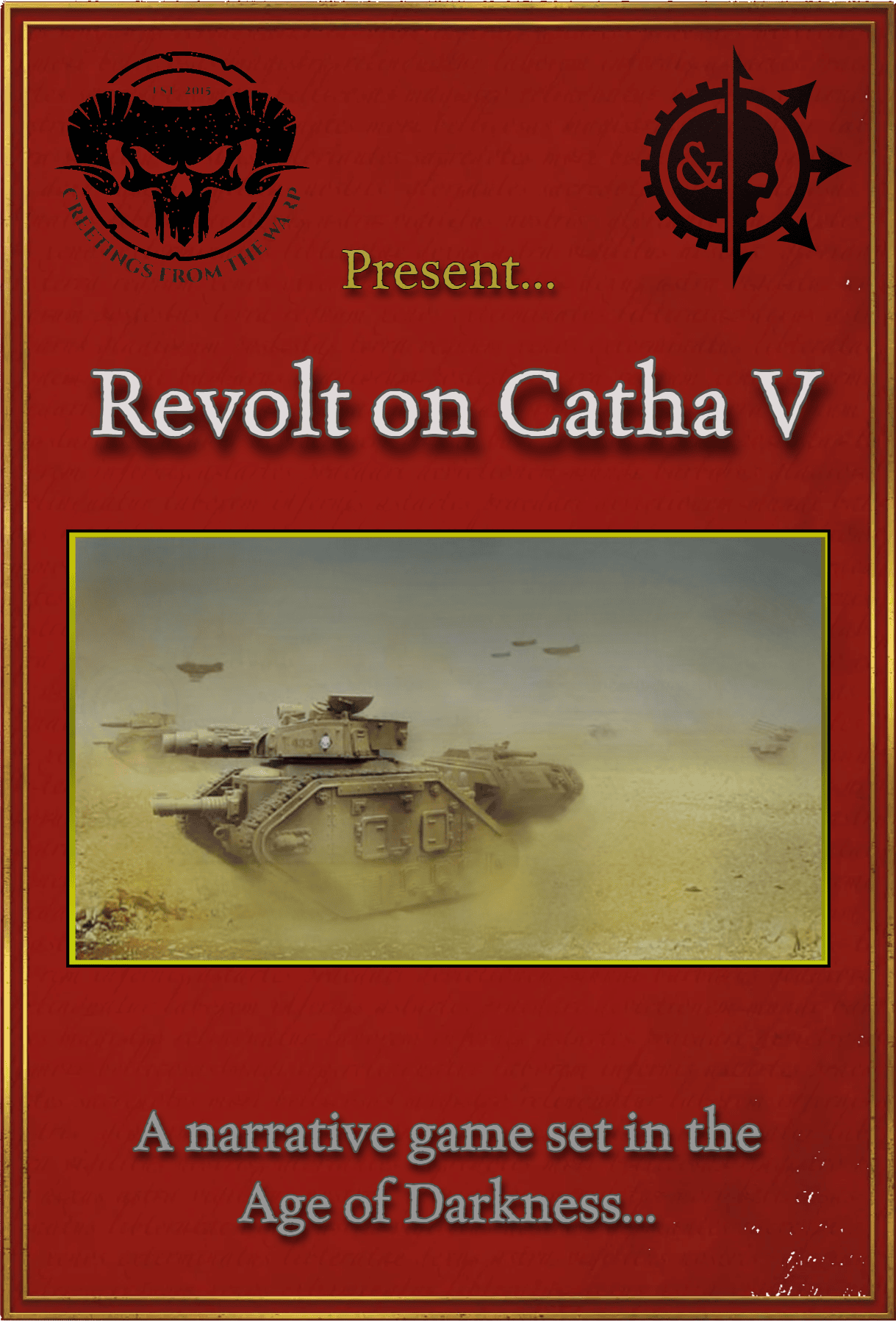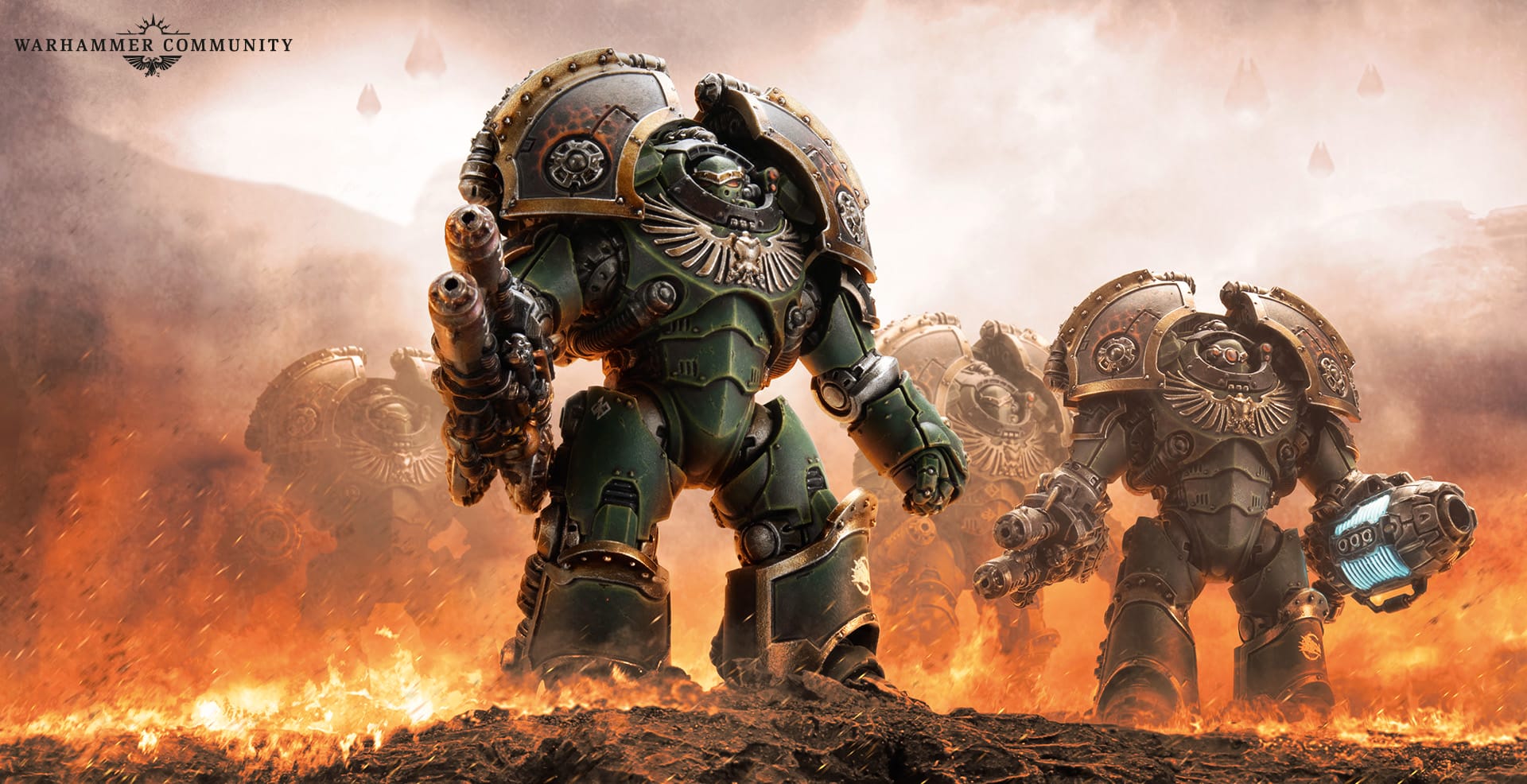Introducing: The Revolt on Catha V
Exploring the next CatD Narrative Event!

Introducing the Catha System
Situated in Segmentum Ultima, the Catha system has proven quite the useful tool in the imperial arsenal. With the Helium rich mines on Catha III, and the heavy iron deposits discovered during the mechanicus settlement on Catha VI, the system has plenty of value for the wider Segmentum. With this in mind, it was only natural that the Imperial army also established a garrison in system, and the somewhat desolate but habitable world of Catha V made for a perfect base.
With an existing, non-space faring, native population to provide initial colonial serfs, Catha V was quickly founded an established as the system hub planet. It would become home to the system Governor, the floating orbital supply base, and an extensive warren of barracks and muster districts for the new permanent system garrison. Catha would not be a major civilised system, such somewhere like Calth, however its distance from any notable front lines, and relatively placid local population, meant it benefitted from a reasonably safe and stable rule during the days of the Great Crusade.
Catha V
The planet itself is not much for the average trooper to write home about. Primarily a hot wasteland, with vast continent spanning rocky deserts, the planet’s primary value has always been in its vast spaces and relatively stable weather formations. Its native population are primarily nomadic tribes, who still typically are employed in the herding of vast Loxodonta, that help to provide the garrison with a consistent supply of rations, and recruits. The most notable settlements on the planet, including the planetary capital, can be found around the edges of the three great oceans - their water supplies proving vital for numerous operational necessities. The 5 great equitorial muster cities are by far the largest of these, with miles of landing strips, barrack blocks, and armoury stores, as well as the necessary administrative centres and hab zones. These proto-hives are vast, but without the need to expand much further past their current format, it is unlikely they’ll ever turn into true hive-cities. Despite the size of the planet, almost 60% of its populace reside here in some form, be they ‘civilised’ natives, colonial settlers, or garrisoned troops.
As part of its role as a potential muster world, it was deemed by the Adminstratum that further infrastructure was necessary, above the basic roadways and flight paths that crisscrossed the planet. To the end, millions of labourers were put to work on the equitorial maglev rail - a series of collosal railways that would allow for swift and easy transportation of troops and material between the various muster zones. Over a million miles of track and grav plate were laid over the course of a couple of years, deep foundation reinforcements driven into the planet’s crust, and thousands of waystations, generators, and signal banks were all installed to ensure this system was fully functional as soon as possible. It cannot be overstated how critical this infrastucture is to the running of the planet, and its ceaseless trains are a crucial element of everything from water supplies, to the garrison pay packets.
The planet does have a sole moon, the lonesome Vestarii that watches over the desert world. Where it’s larger parent is mostly wasteland, Vestarii has become an operational hub for the imperial navy, the mechanicus, and the local tarde cartels. Vast sub-orbital dockyards, tariff stations, refuelling lines, and market halls can be found here, as well as several high-anchor docks for larger vessels. Resources from across the system flow readily through its halls and facilities, as well those lifted from Vestarii’s surface - its cold polar zones providing several fascinating study points for the Mechanicus Biologis.
Catha V and the Heresy
When Catha V declared its loyalties to the Warmaster Horus, it did so with only minority support. The presiding council of nobility, supported by allies in the various planetary guilds, raised the Eye from behind their curtain walls and void shields. Content in their mastery of the planet’s key ‘civilised’ hubs, uncaring of those who dwelled without. Fed up of the Imperial tithe, and its increasing demands of taxation and supplicancy towards distant Terra, the council reasoned that they would see a fairer life under the Warmaster, offering the planet’s space and system resources as a new muster world for the Warmaster’s host. With the arrival of representative of the traitor host, the planet underwent a new age of reformation - with construction work springing up all across its muster-cities and arsenals.
Whilst the planet’s cities and landing grounds began to fill with numerous troops and munitions for the Warmaster’s campaigns, outside in the desert a storm began to brew. The various indigenous cultures of Catha, along with a small selection of still loyal imperial officers and commanders, have begun a popular uprising against their so called ‘overlords’. And despite the insistence of Governor General Pasharus, the best efforts of the local garrisons are failing to suppress it.
Railways blown, supply dumps raided, generators stations sabotaged, the rebels have made serious dent in the capabilities of the planet to continue its role in the traitor war effort. Fearing their ongoing failure may earn the ire of the Warmaster, the council of Nobles has put out the call for aid, offer arms and supplies in return for assistance in breaking the rebels. Meanwhile deep in the desert, the surviving Imperial officers have been doing just the same.
Who are the Commanders?
FORCES OF THE REVOLUTION
For those who seek to restore Imperial control to Catha, then their hopes rest on the guidance of Maj. Gen. Lawrencius – Imperial Strategos. Under his advice have the various local forces managed to put aside minor differences and focus on their guerilla campaign. A cold, calculating, and quickly becoming obsessed with his own legend, he nevertheless is the lynchpin in Imperial strategy.
His methods put focus on lighting raids and extensive reconnaissance, taking a dim view of any fighting force that fails to understand the land they are battling upon.
FORCES OF OPPRESSION
The garrison of Catha V remains under the command of Governor General Pasharus. A veteran of the crusade prior to his retirement and appointment, Pasharus embodies the definitive ‘career soldier’. He is careful, thorough, and distrustful of ‘unusual’ methods or practices commonly found elsewhere in the Warmaster’s forces.
Pasharus’ forces rely on traditional tactics of ‘men and guns’ to keep control of the planet, pushing his regiments to focus on strong core infantry formations, and dismissing commanders who neglect duties in favour of the esoteric or barbaric.
So why come and fight?
Its a good question really. However the answer is surprisingly simple.
Guns. And Ships.
Catha V, thanks to older Imperial stockpiles, and new traitor efforts, has become a plentiful arsenal of war material and supplies. Whilst it contains nothing in the way of war-changing super engines, its stocks are full of the small arms and medium weapons needed to outfit numerous Imperial Army and Legionary regiments. The winning side would be able to utilise the planet’s muster-cities for their own ends, turning the quiet system either into a new stepping stone towards Terra, or a base of operations against the traitor supply lines. Atop this, the numerous barques, trade caravels, and system monitors in Vestarii’s orbital docks would be of considerable benefit to any local fleet - before even considering their supplies.
Further to this, there has been rumour of further insurrection in the nearby Therion system (another Imperial supply hub), and undoubtedly any victory here would impact the ongoing war for those planets too…
So come and join us! With more articles telling the story of the campaign here, and the actual event in September at Greetings from the Warp. W elook forward to seeing you!

